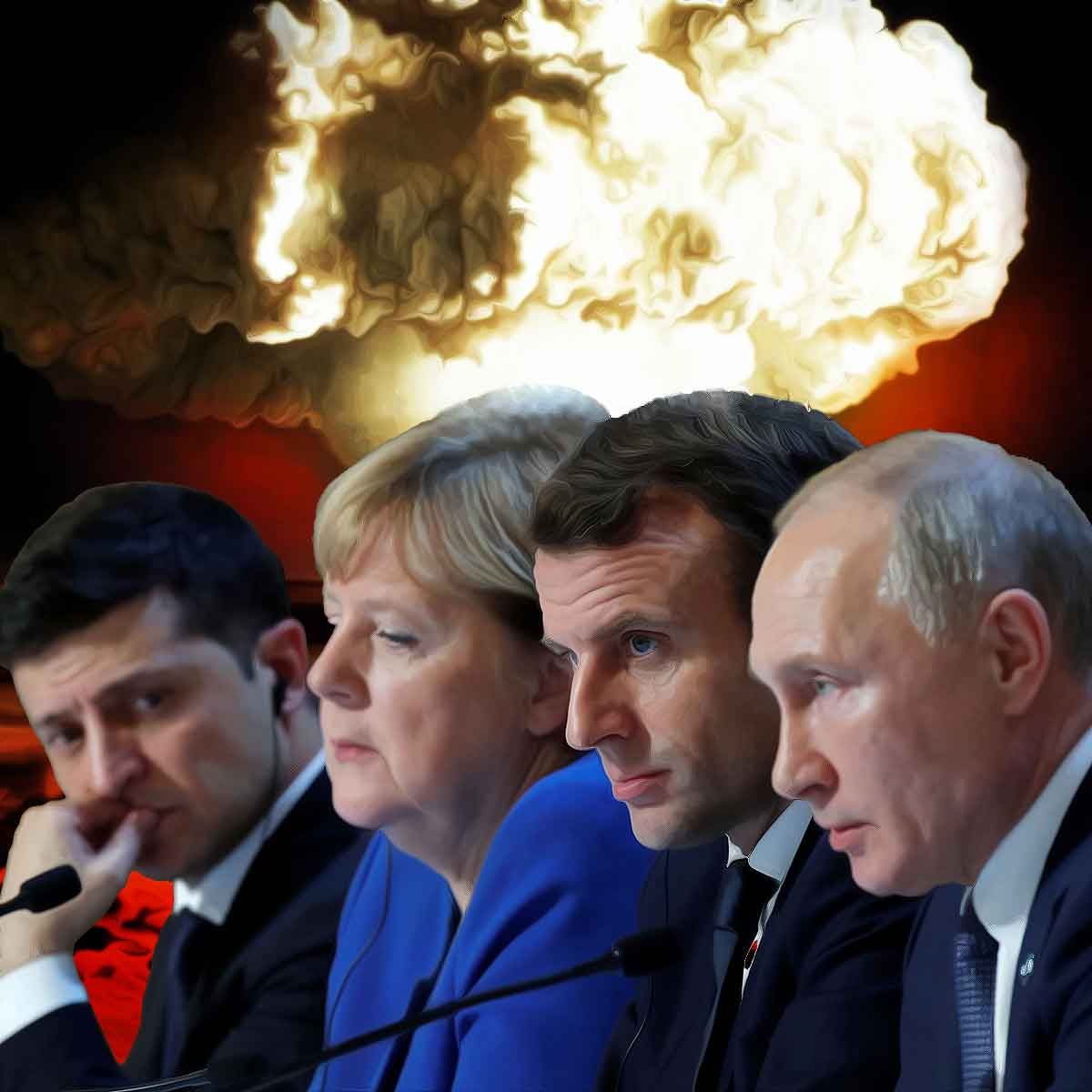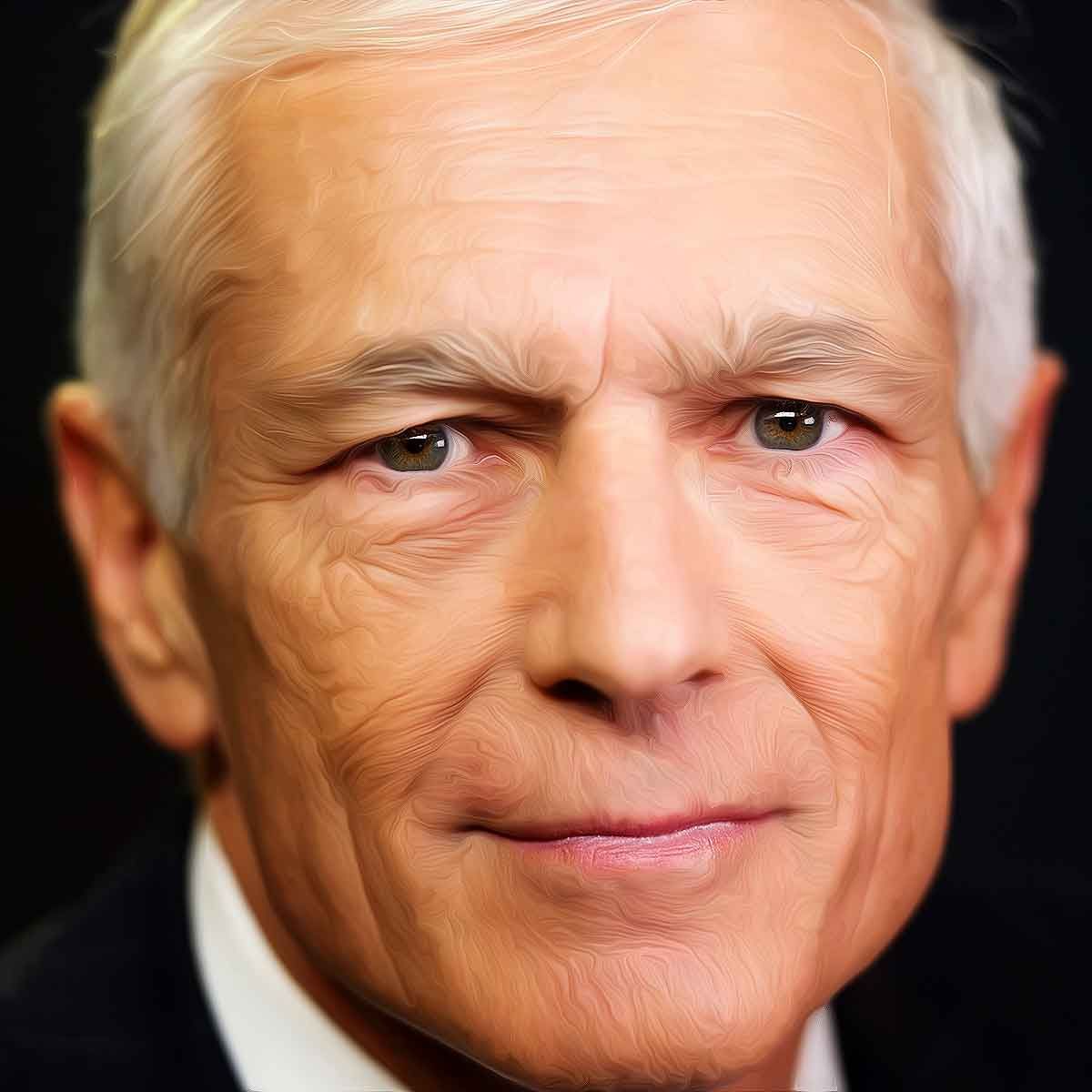MORE COVERAGE
Twitter Coverage
Satyaagrah
Written on
Satyaagrah
Written on
Satyaagrah
Written on
Satyaagrah
Written on
Satyaagrah
Written on
JOIN SATYAAGRAH SOCIAL MEDIA
"Past lessons, future cautions": As global leaders dance delicately with nuclear words, the looming shadow of today's 'mushroom cloud' is a power beyond imagination, Modern hydrogen bombs bear a potency that could overshadow Hiroshima's dark past

The concept of a nuclear explosion is one that many hope remains just that – a concept. However, when leaders, like those in Russia and Ukraine, start talking about nuclear weapons, the gravity of the situation becomes all too real. The ensuing 'mushroom cloud' from a nuclear detonation, often depicted in films, is not just a cinematic spectacle – it signals death and devastation for millions.
|
To provide some context, consider this: the modern hydrogen bombs that nations possess today are significantly more potent than those used during World War II on the cities of Hiroshima and Nagasaki. To draw a comparison, the USA's Castle Bravo is an astonishing 1000 times more powerful than the "Little Boy" bomb dropped on Hiroshima. Russia's behemoth, the Tsar Bomba, takes it up a notch, being more than triple the power of Castle Bravo.
A significant concern arose recently when Ukrainian President Volodymyr Zelensky made a shocking declaration in a video. He expressed a desire for NATO to conduct a preemptive nuclear strike against Russia as a means to deter the looming threat posed by Putin's forces. According to Zelensky, this drastic action would neutralize the risk of a nuclear counterattack from Russia on Ukrainian soil.
Interestingly, the term 'nuclear weapons' or its colloquial reference, the 'N-word', isn't unfamiliar in global politics. Before Zelensky's statement, Russia had already mentioned nuclear arms concerning the tense situation with NATO and Ukraine. Moving our focus to the Indian subcontinent, India's neighbouring country, Pakistan, frequently indulges in nuclear rhetoric. Some Pakistani leaders are seemingly rather cavalier, frequently reminding the world of their nuclear arsenal, sometimes even hinting at using them against India. Further east, North Korea's enigmatic leader sits atop a stockpile of nuclear weapons, believed to have been supported by Pakistan, and regularly threatens regional peace by flaunting this deadly cache.
It's a perplexing paradox of our times. Despite our technological advancements, the global discourse is increasingly dominated by threats of nuclear strikes, ballistic missiles, and other weaponry. This casualness can be dangerous, given that the last actual use of such weapons obliterated Hiroshima and Nagasaki within moments, causing 140,000 and 74,000 deaths, respectively. These figures represent just the immediate fatalities. For years following the blasts, residents grappled with the devastating effects of radiation, leading to diseases like leukemia, breast cancer, lung cancer, and thyroid cancer. The radiation's long-term effects were so pronounced that the Japanese coined a term, 'Hibakusha', specifically for those affected by it.
Looking back, "Little Boy" and "Fat Man", the bombs that wreaked havoc on Hiroshima and Nagasaki, seem almost mild when juxtaposed with today's nuclear behemoths. To paint a clearer picture, Visual Capitalist drew up an illustrative comparison. Whereas "Little Boy" and "Fat Man" had explosive yields equivalent to 15 and 21 kilotons of TNT, contemporary hydrogen bombs overshadow them in terms of sheer destructive power.
|
The Aftermath of a Nuclear Detonation
But what really transpires after such a cataclysmic explosion?
Modern hydrogen bombs, unlike their predecessors, utilize both fusion and fission reactions to release energy. This dual reaction means they can produce exponentially more energy than the atomic bombs of the past, which relied solely on fission. Some reports suggest that these advanced bombs can generate heat in their immediate vicinity comparable to the temperatures at the sun's core. For those at 'ground zero' or the blast's epicenter, the end would be instantaneous – death would occur so swiftly that the victims wouldn't even have a chance to register what happened. Interestingly, air-detonated bombs reportedly have an even broader impact radius than those exploded on the ground.
Following the initial explosion, a raging fireball forms, succeeded quickly by a massive shockwave. This shockwave, fueled by the immense energy of the explosion, can demolish buildings, infrastructure, and practically everything within several miles. The destruction is so swift that people have virtually no time to react. Imagine a bustling city – one moment it's alive with activity, and the next, it's reduced to rubble with millions dead or injured. The rising energy from the blast is so fierce it could even knock airplanes out of the sky. Roads, bridges, railway lines – all could be obliterated, making rescue operations a herculean challenge. Survivors, few as they might be, would be coated with radioactive dust, demanding immediate decontamination. And, the shockwave doesn't stop there; it's powerful enough to cause internal bleeding, lung and ear damage even in regions beyond the direct impact area. In the unfortunate event that someone did seek refuge in a bomb shelter, they might still succumb, not to the blast, but due to oxygen deprivation or carbon monoxide poisoning.
But the horror doesn't end there. Following the immediate destruction, 'radioactive fallout' sets in. This refers to the radioactive particles that are thrust into the atmosphere post-detonation, only to settle back down, contaminating vast regions. The modern nuclear arsenal is so potent that it can disperse this radioactive material into the stratosphere, exacerbating the fallout's longevity and reach.
|
The power and repercussions of nuclear weaponry are genuinely staggering. It's a reminder of the immense responsibility world leaders bear and underscores the importance of diplomacy and peaceful resolutions over conflict.
Radioactive Repercussions: Not Just Immediate, but Lasting | Modern nuclear weaponry possesses an astounding ability: to propel radioactive debris into the stratosphere, the second major layer of Earth's atmosphere. This characteristic isn’t just an impressive feat of engineering; it's a terrifying reality with potentially devastating consequences for all living beings in the vicinity of such a blast. Considering densely populated urban regions as targets, the number of affected individuals could spiral into millions.
Those unfortunate enough to be in the blast's proximity would face acute radiation poisoning, a condition that severely damages the body's internal systems, leading to possible death within weeks. The catastrophe doesn't end there. Survivors would face a life overshadowed by the ever-present specter of cancer, a direct aftermath of their radiation exposure.
The Threat of Nuclear Winter and a Global Climate Crisis | The International Campaign to Abolish Nuclear Weapons (ICAN) brings another alarming perspective to the fore. Even if less than 1% of the world's current nuclear armament was detonated, it could lead to widespread disruptions in the global climate. Building on this, a study by The Bulletin of The Atomic Scientists suggests that detonating merely 50 bombs equivalent in power to the 'Fat Boy' could plunge the planet into conditions reminiscent of the 'Little Ice Age'. This historical period, spanning from the 1300s to the mid-1800s, saw global temperatures drop by about 3.6 degrees Fahrenheit. Such a drastic change could have devastating effects, including crop failure, famines, and the resurgence of widespread diseases.
The Power Balance: Who Holds the Nuclear Cards? | A peek into global arsenals reveals a stark reality. Nearly 90% of the world's nuclear warheads are controlled by two superpowers: Russia and the USA, each boasting around 5,000 warheads, according to the Federation of American Scientists (FAS). Closer to home, India and Pakistan each have a cache of approximately 160-165 warheads. Other nuclear-capable nations include China, the UK, North Korea, France, and Israel.
The Nuclear Deterrent Paradox | One might wonder, with the horrifying potential of nuclear weapons, why do nations pursue them? The answer is somewhat paradoxical. When the USA conducted the first nuclear test, it wasn't just a scientific triumph; it was a geopolitical statement. The world suddenly had to reckon with a nation capable of unleashing unprecedented destruction. This ignited a global arms race, with nations arriving at a grim conclusion: the only way to deter a nuclear adversary is by possessing similar capabilities.
|
This has led to a precarious situation where the sheer magnitude of destruction that these weapons can bring acts as a deterrent against their actual use. The horrors witnessed in 1945, with the bombings of Hiroshima and Nagasaki, now seem like minor incidents compared to the potential devastation modern nuclear arms promise. Countries, recognizing the mutual assured destruction that would ensue from a nuclear war, are held in a standoff. For instance, India's nuclear capabilities offer a sense of security amidst neighbors like Pakistan and China. Similarly, North Korea's nuclear pursuits serve as a deterrent against interference, especially from the USA.
Nuclear Power: A Double-Edged Sword | The story of nuclear power is one of both peril and promise. On one hand, it represents an unparalleled threat when fashioned into weapons of mass destruction. On the other, it offers immense potential as a clean and efficient energy source. For example, research has found that a single 1-inch pellet of Uranium can generate an energy equivalent to vast amounts of coal, natural gas, or oil. Embracing nuclear energy could be pivotal in addressing climate change and ensuring consistent power supply for future generations.
However, as nations teeter on the edge, wielding their nuclear arsenals, it's crucial to remember the stakes. Political leaders must recognize the perils of brandishing nuclear threats. As Prime Minister Modi recently communicated to Putin, the world now is not one for war. It's imperative that world leaders appreciate the significance of their decisions, opting for dialogue, diplomacy, and collaboration over destructive confrontations.
 Support Us
Support Us
Satyagraha was born from the heart of our land, with an undying aim to unveil the true essence of Bharat. It seeks to illuminate the hidden tales of our valiant freedom fighters and the rich chronicles that haven't yet sung their complete melody in the mainstream.
While platforms like NDTV and 'The Wire' effortlessly garner funds under the banner of safeguarding democracy, we at Satyagraha walk a different path. Our strength and resonance come from you. In this journey to weave a stronger Bharat, every little contribution amplifies our voice. Let's come together, contribute as you can, and champion the true spirit of our nation.
 |  |  |
| ICICI Bank of Satyaagrah | Razorpay Bank of Satyaagrah | PayPal Bank of Satyaagrah - For International Payments |
If all above doesn't work, then try the LINK below:
Please share the article on other platforms
DISCLAIMER: The author is solely responsible for the views expressed in this article. The author carries the responsibility for citing and/or licensing of images utilized within the text. The website also frequently uses non-commercial images for representational purposes only in line with the article. We are not responsible for the authenticity of such images. If some images have a copyright issue, we request the person/entity to contact us at This email address is being protected from spambots. You need JavaScript enabled to view it. and we will take the necessary actions to resolve the issue.
Related Articles
- "Unity in strategy, strength in partnership": Amid China's rising influence in the Indo-Pacific, Germany strengthens military relations with 'reliable' India, eyeing secure trade routes and strategic collaborations while stepping up military ties
- "There is no path to peace. Peace is the path": NSA Ajit Doval's arrival in Jeddah represents India's commitment to dialogue and diplomacy, his belief - a peaceful resolution to the Ukraine conflict - remains India's utmost priority and greatest desire
- "War is costly, peace is priceless": India's pivotal role in BRICS is shaping the narrative amid Ukraine crisis, championing dialogue and diplomacy, its influence in fostering global harmony is becoming increasingly evident on the international stage
- "Greed's frontier: The harsh truth of expansionism": Amid the furore over China releasing a new map, Ex-Chief of Army Staff General Manoj Naravane shared a map of China and took a dig saying "finally someone has got the map of China as it really is"
- "Zara ahista mar tamacha-e-zindagi, Chehre pe nishaan dikhne lage hain": Russian court fined $374 million to American search giant Google for its failure to delete prohibited information on conflict in Ukraine, ask to remove all “misleading information”
- "We won’t be able to evacuate American citizens if Russia attacks Ukraine" says President Biden: US Govt authorizes departure of govt employees from Ukraine amid escalating tensions
- “As you know, madness is like gravity...all it takes is a little push”: Latest of Vogue magazine featuring a glossy photoshoot of Ukrainian President Vladimir Zelensky with wife Alena elicited a harsh reaction online amid the military conflict with Russia
- "New witness testimony raises serious questions about Western media ethics": A key witness to the widely publicized incident at the Mariupol maternity hospital ‘airstrike' punctured the official narrative of a Russian airstrike on the facility
- "The hardest thing in life to learn is which bridge to cross and which to burn": Russian anti-terrorism confirms truck bombing damaged strategic Crimean Bridge that connects peninsula with mainland Russia, Mikhail Podoliak tweeted blast as “the beginning”
- "We participate in a tragedy; at a comedy we only look": Ukrainians are all set and prepared for a Russian "Nuclear threat" by organizing a wild massive orgy on Shchekavystsa hill just outside of Kiev, with more than 15000 people subscribing for the event
- The tension between Russia and Ukraine has raised concerns world over of possible invasion by Russia on Ukrainian soil and the US has started supplying military aid to Russia’s neighbouring nation: Let's dig up some details
- "The most successful war seldom pays for its losses": Russia claims victory in Ukraine referendums, paves way for annexation, Pro-Moscow officials said all four occupied regions of Ukraine voted to join Russia, but many Western leaders calling it a sham
- "Don’t be mad at the mirror if you are ugly": Russian energy giant Gazprom and National Iranian Oil Company signed a $40-billion MOU on President Putin visit, West sanctions tried to limit funding to Russia that might be used for war against Ukraine
- Indian international students are falling prey to sex pimps, targeting girls at educational campuses in Canada: Report by The Canadian Bazaar
- "300 meetings, 200 hours, 15 drafts and the indomitable spirit of 4 diplomats": Discover the untold behind-the-scenes efforts at the monumental G20 Summit in forging a consensus on the Ukraine issue, marking a significant milestone in global diplomacy

























